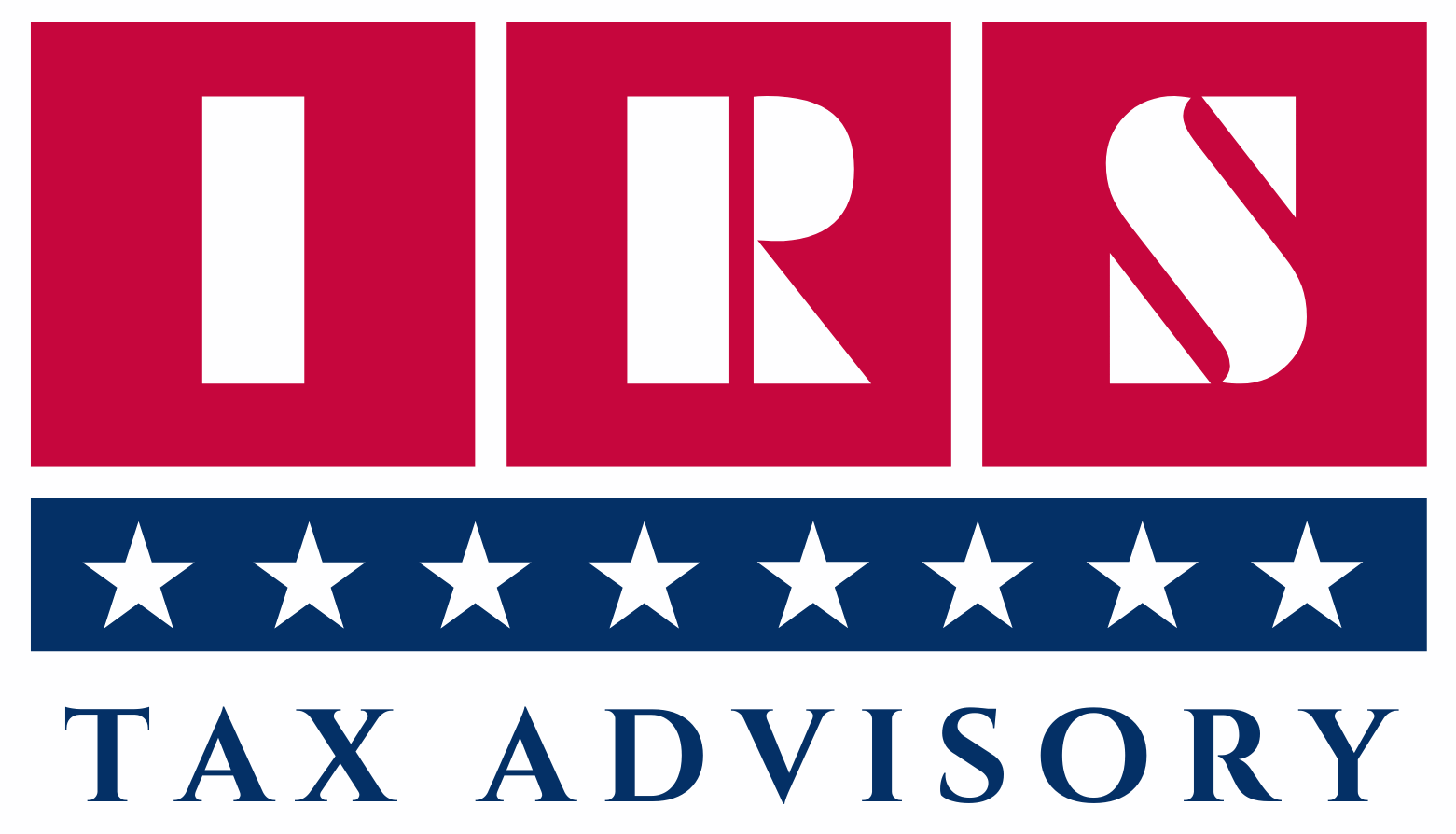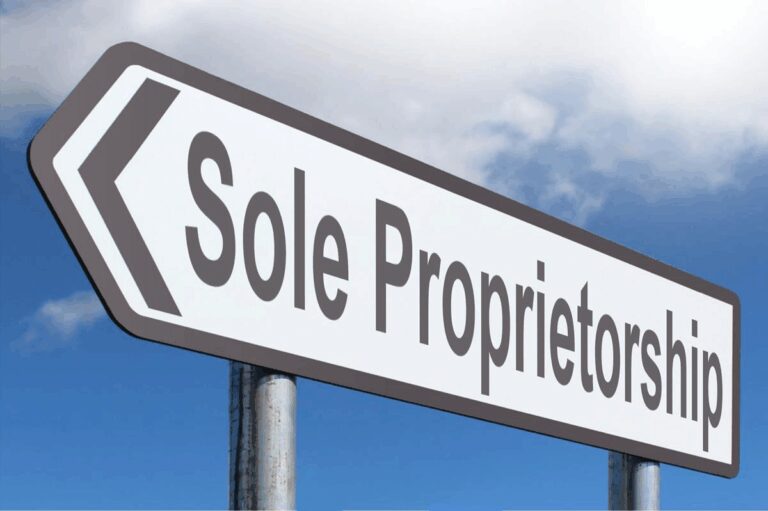Form 1120 Instructions- Best Detailed Overview
Table of Contents
Form 1120 instructions is divided into multiple sections and schedules, each designed to collect specific financial, operational, and tax-related data from C corporations. Understanding each part in detail ensures accurate reporting, tax compliance, and effective financial planning.
Form 1120 Instructions-Header Information (Top of the Form)

Before entering financial data, corporations must provide key identity and classification details:
- Name and Address – As registered with the IRS.
- Employer Identification Number (EIN) – Corporate tax ID.
- Date Incorporated & Total Assets – Reflecting business structure and financial position.
- Type of Return (Initial, Final, Amended, Name Change, etc.) – Mark any applicable boxes.
Why It Matters: This section anchors the return’s identity and helps the IRS track tax periods and compliance status.
Section I: Income (Lines 1–11)
This section determines gross income before deductions.
- Line 1a – Gross receipts or sales
- Line 1b – Returns and allowances
- Line 1c – Net receipts (1a – 1b)
- Line 2 – Cost of Goods Sold (from Form 1125-A)
- Line 3 – Gross profit (1c – 2)
- Line 4 – Dividends
- Line 5 – Interest income
- Line 6 – Gross rents
- Line 7 – Royalties
- Line 8 – Capital gain net income (Schedule D)
- Line 9 – Net gain/loss from Form 4797 (business property)
- Line 10 – Other income (e.g., bad debt recovery, prior year refunds)
- Line 11 – Total income (sum of Lines 3–10)
Why It Matters: This section defines total revenue, which is the foundation for computing taxable income.
Section II: Deductions (Lines 12–29c)
Captures ordinary and necessary business expenses that reduce taxable income.
- Line 12 – Compensation of officers (from Form 1125-E)
- Line 13 – Salaries and wages (excluding officer comp)
- Line 14 – Repairs and maintenance
- Line 15 – Bad debts
- Line 16 – Rents
- Line 17 – Taxes and licenses
- Line 18 – Interest expense (consider 163(j) limitations)
- Line 19 – Charitable contributions (up to 10% of taxable income before special deductions)
- Line 20 – Depreciation (from Form 4562)
- Line 21 – Depletion (natural resources)
- Line 22 – Advertising
- Line 23 – Pension/profit-sharing plans
- Line 24 – Employee benefit programs
- Line 25 – Domestic production activities (pre-2018 or carryover items)
- Line 26 – Other deductions (from attached statement)
- Line 27 – Total deductions
- Line 28 – Taxable income before special deductions (Line 11 – Line 27)
- Line 29a–c – Net operating loss deduction and special deductions (e.g., DRD)
Why It Matters: Proper deduction reporting ensures tax liability is not overstated, and all allowable reductions are used.
Section III: Tax and Payments (Lines 30–36)
This portion calculates total tax liability and credits.
- Line 30 – Taxable income (Line 28 – Line 29c)
- Line 31 – Total tax (flat 21% corporate rate + additional taxes, like recapture taxes)
- Line 32 – Payments: estimated tax, prior year overpayments
- Line 33 – Refundable credits (e.g., Form 3800 for general business credits)
- Line 34 – Total payments and credits
- Line 35 – Tax due (if Line 31 > Line 34)
- Line 36 – Overpayment (if Line 34 > Line 31)
Why It Matters: Ensures the correct corporate tax owed or refundable is reported and remitted.
Supporting Schedules & Attachments
Form 1120 includes several schedules. Common ones include:
Schedule C: Dividends, Inclusions, and Special Deductions
Details specific dividend income (domestic and foreign) and calculates special deductions, like the dividends received deduction (DRD).
Why It Matters: Key to reducing taxable income from intercorporate dividends and avoiding double taxation.
Schedule J: Tax Computation and Payments
Breaks down:
- Base tax calculation (21% on taxable income)
- Foreign tax credit
- Other taxes (e.g., recapture, AMT adjustments)
- Payments and refundable credits
- Balance due or overpayment
Why It Matters: Provides a transparent audit trail of how the final tax figure was reached.
Schedule K: Other Information
Captures general disclosures, including:
- Accounting method used (cash, accrual, other)
- Business activity code (NAICS)
- Number of shareholders
- Foreign ownership or involvement
- Personal holding company status
Why It Matters: Helps the IRS identify risk areas, applicable rules, or special filing requirements (e.g., Forms 5471, 8992).
Schedule L: Balance Sheets (Beginning and End of Year)
Reports corporate financial position at year start and end:
- Assets (cash, accounts receivable, inventory, fixed assets)
- Liabilities (accounts payable, loans)
- Equity (retained earnings, capital stock)
Why It Matters: IRS compares this to income and deductions to verify accuracy and detect inconsistencies or omitted income.
Schedule M-1: Book-to-Tax Reconciliation
Explains differences between financial (book) income and taxable income, such as:
- Depreciation differences
- Tax-exempt interest
- Meals & entertainment adjustments
Why It Matters: A critical reconciliation that helps the IRS detect aggressive tax positions or unreported income.
Schedule M-2: Analysis of Retained Earnings
Details changes to retained earnings from:
- Net income/loss per books
- Distributions/dividends
- Prior period adjustments
Why It Matters: Confirms earnings reported are aligned with actual distributions and tax payments.
Additional Attachments (As Needed)
Depending on corporate structure and operations, Form 1120 may also require:
- Form 1125-A – Cost of Goods Sold
- Form 1125-E – Compensation of Officers
- Form 4562 – Depreciation and Amortization
- Form 8990 – Limitation on Interest Deduction (Section 163(j))
- Form 5471/5472 – Foreign ownership or activities
- Form 2439, 1120-W, 4626 – Credits, estimated payments, AMT (as applicable)
Why It Matters: These forms support compliance with complex, entity-specific tax rules and foreign reporting.
How to Calculate Corporate Tax Using Form 1120 – Descriptive Analysis
Calculating a corporation’s tax liability using IRS Form 1120 involves a multi-step process. It starts with gross income, incorporates allowable deductions, applies the flat corporate tax rate, and finally includes any credits or prepayments to determine what is owed or refunded.
Step 1: Calculate Gross Income (Lines 1–11)
Begin by summing all sources of business income. This includes:
- Gross receipts or sales (Line 1a)
- Less returns and allowances (Line 1b)
- = Net Sales (Line 1c)
Then, subtract Cost of Goods Sold (COGS) (from Form 1125-A) to find Gross Profit (Line 3).
Next, add other income:
- Dividends (Line 4)
- Interest income (Line 5)
- Rental income, royalties, capital gains, etc. (Lines 6–10)
Formula:
Gross Income = Net Sales – COGS + Other Income (Lines 4–10)
Step 2: Deduct Business Expenses (Lines 12–27)
Corporations can deduct ordinary and necessary expenses to arrive at taxable income before special deductions.
Examples include:
- Officer salaries (Line 12)
- Wages (Line 13)
- Rent, advertising, interest, depreciation, employee benefits (Lines 14–26)
Formula:
Total Deductions = Sum of all deductible business expenses (Lines 12–26)
Then:
Taxable Income Before Special Deductions = Gross Income – Total Deductions
Step 3: Apply Special Deductions (Line 29c)
Two common special deductions:
- Net Operating Loss (NOL) Carry forward – If the business had prior-year losses
- Dividends Received Deduction (DRD) – For qualifying domestic dividends (Schedule C)
These are subtracted from taxable income before calculating tax:
Taxable Income = Line 28 – Line 29c
Step 4: Calculate Federal Tax (Line 30 & Schedule J)
Since the Tax Cuts and Jobs Act (TCJA), C corporations pay a flat 21% federal corporate tax rate.
Formula:
Federal Tax Liability = Taxable Income × 21%
If applicable, add:
- Recapture taxes
- Base erosion taxes
- Estimated tax penalties (rare, but possible)
Step 5: Subtract Tax Credits (Schedule J)
Apply refundable or non-refundable credits such as:
- General Business Credit (Form 3800)
- Foreign Tax Credit (Form 1118)
- R&D credit, energy credits, etc.
Formula:
Net Tax Due = Federal Tax – Allowable Tax Credits
Step 6: Subtract Estimated Tax Payments & Overpayments (Line 32–33)
Subtract any:
- Estimated quarterly tax payments
- Overpayments from the prior year
- Prepaid taxes from other IRS forms
Step 7: Determine Final Balance Due or Refund (Lines 35–36)
- If total tax > total payments/credits → Tax Due (Line 35)
- If payments/credits > tax liability → Refund (Line 36)
Example Calculation:
Let’s assume:
- Gross Receipts = $500,000
- COGS = $200,000
- Other Income = $10,000
- Total Deductions = $250,000
- No special deductions
- No tax credits
- Estimated Payments = $5,000
Step-by-Step:
- Gross Income = ($500,000 – $200,000) + $10,000 = $310,000
- Taxable Income = $310,000 – $250,000 = $60,000
- Tax Liability = $60,000 × 21% = $12,600
- Minus Estimated Payments = $12,600 – $5,000 = $7,600 Due
Special Considerations in Form 1120 Tax Calculations
| Issue | Impact |
| Section 163(j) Limitations | May limit interest deductions based on Adjusted Taxable Income (ATI) |
| Schedule M-1 | Reconciliation required for book/tax differences |
| NOL Rules | Can offset 80% of taxable income; no carrybacks post-2018 (with some exceptions) |
| Form 4562 | For depreciation deductions under MACRS or bonus depreciation rules |
| State Income Taxes | Not included on Form 1120; filed separately per state |
Summary Formulas For Form 1120
| Calculation | Formula |
| Net Sales | Gross Sales – Returns/Allowances |
| Gross Profit | Net Sales – COGS |
| Gross Income | Gross Profit + Other Income |
| Taxable Income (Before Special Deductions) | Gross Income – Total Deductions |
| Final Taxable Income | Above – Special Deductions |
| Tax Liability | Final Taxable Income × 21% |
| Net Tax Due | Tax Liability – Credits – Payments |
1120 Corporate Tax Rate (Flat Rate) – Fully Explained
What Is the Corporate Tax Rate?
The corporate tax rate is the percentage at which C corporations are taxed on their taxable income. As of the Tax Cuts and Jobs Act (TCJA) of 2017, the U.S. federal government imposes a flat 21% corporate income tax rate on all taxable income reported by C corporations on IRS Form 1120.
Flat vs. Graduated Tax Rates: What Changed?
Before 2018 (Pre-TCJA):
- C corporations were taxed on a graduated scale, ranging from 15% to 35%, depending on income brackets.
- This created complexity and occasional distortion in business structuring.
After 2018 (Post-TCJA):
- A flat 21% rate replaced the tiered brackets.
- Every C corporation, regardless of income level, pays the same federal tax rate on its taxable income.
Key Outcome: Simplified calculations, lower average effective rates for many corporations, and a more competitive global rate.
How the 21% Flat Rate Applies (Example)
| Taxable Income | Flat Tax Calculation | Tax Owed |
| $100,000 | $100,000 × 21% | $21,000 |
| $1,000,000 | $1,000,000 × 21% | $210,000 |
| $15,000,000 | $15,000,000 × 21% | $3,150,000 |
Formula:
Corporate Tax = Taxable Income × 21%
Note: This is federal tax only. State corporate taxes apply separately and may have flat or progressive rates.
Why the Flat Corporate Tax Rate Matters
1. Predictability in Tax Planning
Corporations can project their tax liability with accuracy, aiding in:
- Quarterly estimated payments
- Cash flow planning
- Dividend/distribution decisions
2. Simplification
- Eliminates need for multiple marginal rate calculations.
- Reduces audit complexity for the IRS and taxpayers.
3. Global Competitiveness
- Prior to the TCJA, the U.S. had one of the highest corporate tax rates in the world (35%).
- The 21% rate positions the U.S. closer to global averages (e.g., UK: 25%, Ireland: 12.5%, Germany: ~30%).
4. Encourages Repatriation and Domestic Investment
- Lower rates aim to incentivize U.S. corporations to reinvest profits domestically rather than keeping earnings overseas.
Important Nuances
| Factor | Details |
| Not Pass-Through Entities | The 21% rate applies only to C corporations — not to S corporations, LLCs, or partnerships. |
| Additional Taxes Still Apply | Some corporations may face additional taxes, like the Base Erosion and Anti-Abuse Tax (BEAT) or Accumulated Earnings Tax. |
| No Alternative Minimum Tax (AMT) | The Corporate AMT was repealed for C corps by TCJA, simplifying compliance. |
| Dividends Are Still Taxed Twice | C corps face double taxation — once at the corporate level (21%), then again when dividends are distributed to shareholders. |
Corporate Tax Rate vs. Individual Tax Rate
C corporations pay 21% corporate tax, whereas shareholders also pay personal income tax on dividends (up to 23.8% including net investment income tax).
Effective total tax: Can reach 40%+ on corporate income if profits are distributed as dividends, which is why pass-through entities are often preferred for small businesses.
Federal vs. State Corporate Tax Rates
While Form 1120 deals with federal corporate tax, corporations must also comply with state corporate taxes, which vary widely:
| State | State Corporate Tax Rate (2024) |
| New York | 7.25% (standard) |
| California | 8.84% |
| Texas | No income tax, but gross receipts tax |
| Florida | 5.5% |
| Delaware | 8.7% |
Note: State corporate tax returns are filed separately from Form 1120.
Summary: Why Understanding the Flat Rate Is Crucial
| Benefit | Explanation |
| Easier Forecasting | Flat rate allows for simple, consistent projections of tax expense. |
| Competitive Business Environment | Aligns U.S. taxation with other developed nations. |
| Simplified Tax Compliance | Reduces complexity and filing burden, especially for small to mid-sized corporations. |
| Foundation of Form 1120 Calculations | All major tax calculations flow from this single rate, forming the core of Form 1120. |
E-Filing and Payment Options for IRS Form 1120 – Complete Guide
Overview
All C corporations filing IRS Form 1120 (U.S. Corporation Income Tax Return) must report annual income, deductions, and taxes due. As of recent IRS mandates, most corporations are required to file Form 1120 electronically (e-file) and must also make federal tax payments electronically.
Understanding how e-filing and payments work is crucial for ensuring timely submission, compliance, and avoiding costly penalties.
1. IRS e-Filing Requirements for Form 1120
Who Must e-File?
The IRS requires corporations to e-file Form 1120 if they meet either of the following:
- They file 10 or more returns of any type (e.g., Forms W-2, 1099, 941, 1120) in a calendar year (as of 2024).
- They have assets of $10 million or more and file 250+ returns per year (older threshold, still relevant for large filers).
This means most small and mid-sized businesses are now legally required to e-file Form 1120.
How to e-File Form 1120
Corporations can e-file Form 1120 using any of the following options:
1. IRS Authorized e-File Providers
- Use a tax professional or CPA who is an IRS Authorized e-File Provider.
- Providers use commercial tax software integrated with the IRS’s Modernized e-File (MeF) system.
2. Self-Preparation Software
- Use business tax software such as:
- TurboTax Business
- Drake Tax
- Lacerte
- ProSeries
- These platforms guide users through data input and e-filing in IRS-accepted format.
3. IRS Modernized e-File (MeF) System (For Developers)
- Large corporations and software developers may file directly through the IRS MeF system using XML-based transmission.
- Ideal for high-volume or integrated enterprise systems.
Paper filing is only allowed for certain exempt entities or when specifically authorized by the IRS (e.g., undue hardship).
2. Payment Options for Tax Due on Form 1120
Corporations that owe tax must make timely payments to avoid interest and penalties. The IRS offers several electronic payment methods to accommodate different business sizes and preferences.
Primary IRS Payment Options
| Method | Details |
| Electronic Funds Withdrawal (EFW) | Pay directly from a business bank account during e-file submission. No separate steps required. |
| Electronic Federal Tax Payment System (EFTPS) | Free and secure IRS system for scheduling payments online or by phone. Mandatory for corporations. |
| IRS Direct Pay | Pay taxes directly from a checking or savings account online. Best for one-time payments. |
| Credit or Debit Card | Pay online through IRS-authorized payment processors. Includes processing fees. |
| Wire Transfer | Used by international filers. Requires special instructions via IRS. |
EFTPS – The Preferred Method for Corporations
The Electronic Federal Tax Payment System (EFTPS) is the mandatory system for most corporate payments, including:
- Balance due on Form 1120
- Estimated quarterly tax payments (Form 1120-W)
Benefits:
- Free and secure
- Schedule payments in advance
- View payment history
- Available 24/7
How to Enroll:
- Create a business account (Takes ~7 days to receive PIN via mail)
- Schedule payments using bank routing/account number
Required for corporations — failing to use EFTPS may result in noncompliance penalties.
Payment Due Dates for Form 1120
Form 1120 and full payment of corporate income tax are generally due by the 15th day of the 4th month after the end of the corporation’s tax year:
- Calendar year corporations → Due April 15
- Fiscal year corporations → Due 4.5 months after fiscal year-end
Late payments incur interest and monthly penalties (0.5% per month up to 25%).
Additional Considerations
| Situation | Payment Guidance |
| Filing Extension (Form 7004) Filed | Extension grants more time to file, NOT to pay. Taxes must still be paid by the due date. |
| Corporation Owes Estimated Taxes | Must pay quarterly estimates using Form 1120-W and EFTPS. |
| International Corporations | May use wire transfer with proper IRS documentation and tracking. |
| Rejected e-Filing | Correct issues promptly and resubmit; payment can still be made via EFTPS or IRS Direct Pay. |
Summary Table – e-Filing & Payment Options
| Function | Best Tool | Why Use It |
| File Form 1120 | Authorized e-file provider / Tax software | Secure, IRS-compliant, and legally required |
| Pay Taxes | EFTPS | Required for most corporations, flexible scheduling |
| One-Time Payment | IRS Direct Pay | Simple interface for occasional payments |
| Pay by Card | IRS Payment Processor | Accepts business credit/debit cards (fees apply) |
| International Use | Wire Transfer | For non-U.S. bank accounts or foreign corporations |
Form 1120 vs. Other Corporate Tax Forms
Corporations
Corporations and business entities in the United States don’t all use the same federal tax form. The choice depends on their business structure, tax classification, and ownership setup. While Form 1120 is designed for C corporations, other forms like 1120-S, 1065, and 1040 Schedules C/E serve different business entities.
Understanding the differences between these forms is essential for accurate tax filing, compliance, and strategic planning.
| Form | Purpose | Filed By |
| Form 1120 | U.S. Corporate Income Tax Return | Domestic C Corporations |
| Form 1120-S | Income Return for S Corporations | S Corporations |
| Form 1120-F | Return of Foreign Corporations | Foreign Corps with U.S. income |
| Form 1065 | Partnership Return | Partnerships, LLCs with 2+ members |
Side-by-Side Comparison Table
| Form | Entity Type | Taxed At Entity Level? | Double Taxation? | Issues Schedule K-1? | Filing With |
| Form 1120 | C Corporation | Yes | Yes | No | IRS |
| Form 1120-S | S Corporation | No (pass-through) | No | Yes | IRS + Shareholders |
| Form 1065 | Partnership/LLC | No (pass-through) | No | Yes | IRS + Partners |
| Schedule C | Sole Proprietor | No | No | No | Attached to 1040 |
| Form 990 | Nonprofit Org | No (unless UBI applies) | No | No | IRS |
Form 1120 Compliance & Penalties
Filing IRS Form 1120 accurately and on time is critical for maintaining good standing as a C corporation. The IRS imposes strict penalties for non-compliance, including late filing and late payment penalties. If Form 1120 is not filed by the due date (typically the 15th day of the 4th month after the tax year ends), the corporation may be charged a penalty of 5% of the unpaid tax per month, up to a maximum of 25%.
Additionally, if the corporation fails to pay the tax due, a 0.5% monthly penalty applies to the unpaid amount, also capped at 25%. In cases of fraud or intentional disregard, much steeper penalties and criminal prosecution may apply. The IRS also requires corporations to submit accurate financial statements, disclosures, and supporting schedules, and any misstatements or omissions can trigger audits, interest charges, or additional assessments. Proper compliance also includes timely payment of estimated quarterly taxes and using approved methods like EFTPS. Staying compliant not only avoids penalties but also helps build credibility with investors, lenders, and regulatory bodies.
- Late Filing Penalty: 5% of unpaid tax per month, up to 25%.
- Late Payment Penalty: 0.5% per month of unpaid tax.
- Accuracy-Related Penalties: Up to 20% of underpayment.
- Failure to File Certain Schedules: May lead to disallowance of deductions.
Conclusion
Form 1120 is the cornerstone of corporate tax compliance for C corporations in the United States. Accurate preparation, timely filing, and adherence to IRS rules can save your business from penalties and audits. Always consult a qualified tax professional for complex matters or multi-entity structures.
FAQs on IRS Form 1120
What is the corporate tax rate for Form 1120?
As of now, C corporations are taxed at a flat federal rate of 21% on their taxable income.
When is Form 1120 due?
Form 1120 is due by the 15th day of the 4th month after the end of the corporation’s tax year (typically April 15 for calendar-year corporations).
What happens if I file Form 1120 late?
Late filing may result in a penalty of 5% of the unpaid tax per month, up to a 25% maximum, plus interest and late payment penalties.
What documents do I need to complete Form 1120?
You’ll need financial statements, accounting records, payroll summaries, depreciation schedules, and prior year returns.
Can I file Form 1120 electronically?
Yes, Form 1120 can be e-filed through the IRS Modernized e-File system (MeF) or by using authorized tax software providers.
Do I need to file estimated taxes with Form 1120?
Yes. Most C corporations must pay quarterly estimated taxes using Form 1120-W if their expected tax liability is $500 or more.
What are the main sections on Form 1120?
Key sections include income, deductions, tax computation, payments and credits, Schedule C (Dividends), Schedule J (Tax computation), and Schedule K (Other information).
Is depreciation included in Form 1120?
Yes. Depreciation is claimed as a deduction and must be detailed in supporting schedules, typically using Form 4562.
How does Form 1120 differ from Form 1120-S or 1065?
Form 1120 is for C corporations taxed at the entity level. Form 1120-S is for S corporations (pass-through), and Form 1065 is for partnerships.
Can a single-member LLC file Form 1120?
Only if the LLC elects to be taxed as a C corporation; otherwise, it typically files Schedule C with Form 1040.







